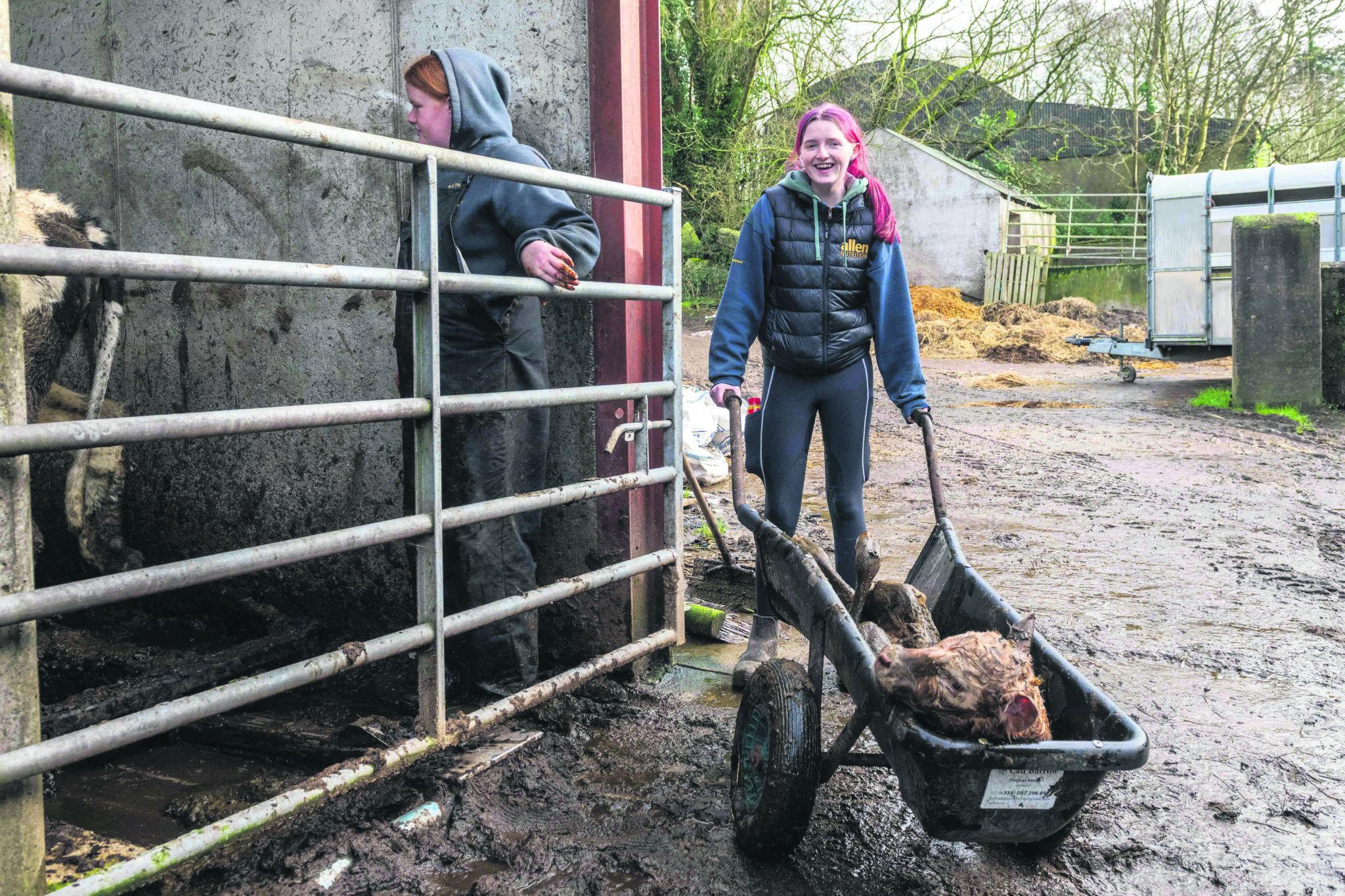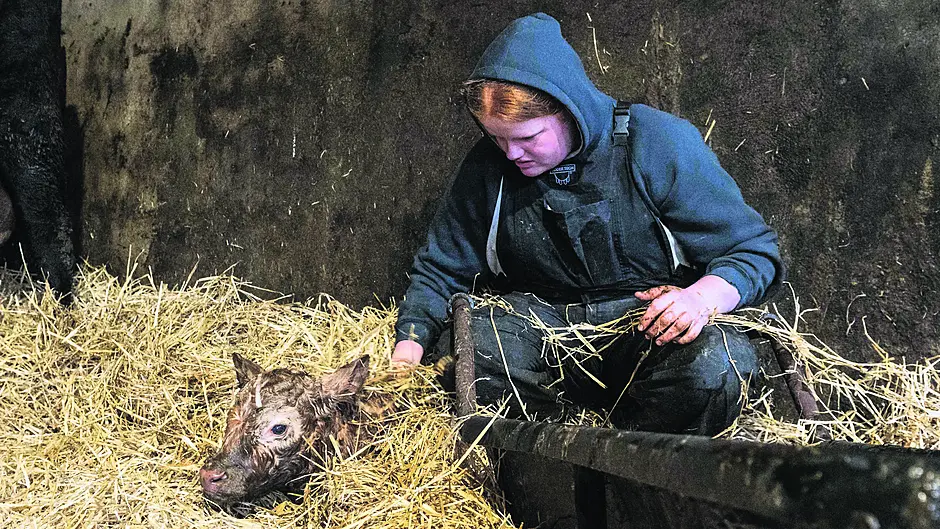THE door has closed on February, and as we leap into March, most dairy farmers in West Cork are now well into calving season.
It is estimated that one million calves will arrive on dairy farms in the first three months of the year.
These pictures on the farm of Peter and Paula Hynes and family show some of the hard work and care being shown by farmers, their families, farm workers, and veterinarians in this busiest of periods for the dairy sector.
Peter told The Southern Star that they are now around 70% through calving.
‘It’s going relatively well so far,’ said Peter. ‘We did have a calf born premature who died and we had one born brain-damaged which had to be put down, but it’s below 2% and generally it has been going smoothly.’
 Chloe Hynes moves a newly born calf to a special pen. (Photo: Andy Gibson)
Chloe Hynes moves a newly born calf to a special pen. (Photo: Andy Gibson)
Peter acknowleges the huge workload of the season. ‘We usually try to plan something for ourselves in April, to have something to focus on,’ he said. Indeed two of his children will be showing at March’s UK Dairy Expo.
James Hurley, the pro of West Cork IFA, has passed the halfway point of his own calving season. James believes technology has made a difference, with many farmers now using camera technology to keep an eye on their animals, while others use ‘Moocall’ calving sensors.
Putting research into practice is also playing an important tole. ‘The research suggests feeding cows late in the evening reduces the chances of calving in the night-time, and I can only speak for myself but that certainly makes a difference,’ James said.
Teagasc say trials showed that restricting silage feeding time resulted in 9% fewer night calvings (from 12.30am to 6.30am) compared with cows with full access to silage.
Choosing sires with low-calving difficulty also has proven successful.
 Newly born calves in the nursery on the Hynes farm. The Hynes family runs a dairy farm in Aherla, West Cork, with a herd of 140 Rathard Holstein cows. The Hynes family is now around 70% through calving. (Photo: Andy Gibson)
Newly born calves in the nursery on the Hynes farm. The Hynes family runs a dairy farm in Aherla, West Cork, with a herd of 140 Rathard Holstein cows. The Hynes family is now around 70% through calving. (Photo: Andy Gibson)
James also used sexed semen, and so far this season, it has produced the expected results. Of course, even with the best planning in the world, things can simply happen. Cows aren’t machines and can’t work that way.
And the work of vets who work long and unsocial hours over the calving period is vital.










